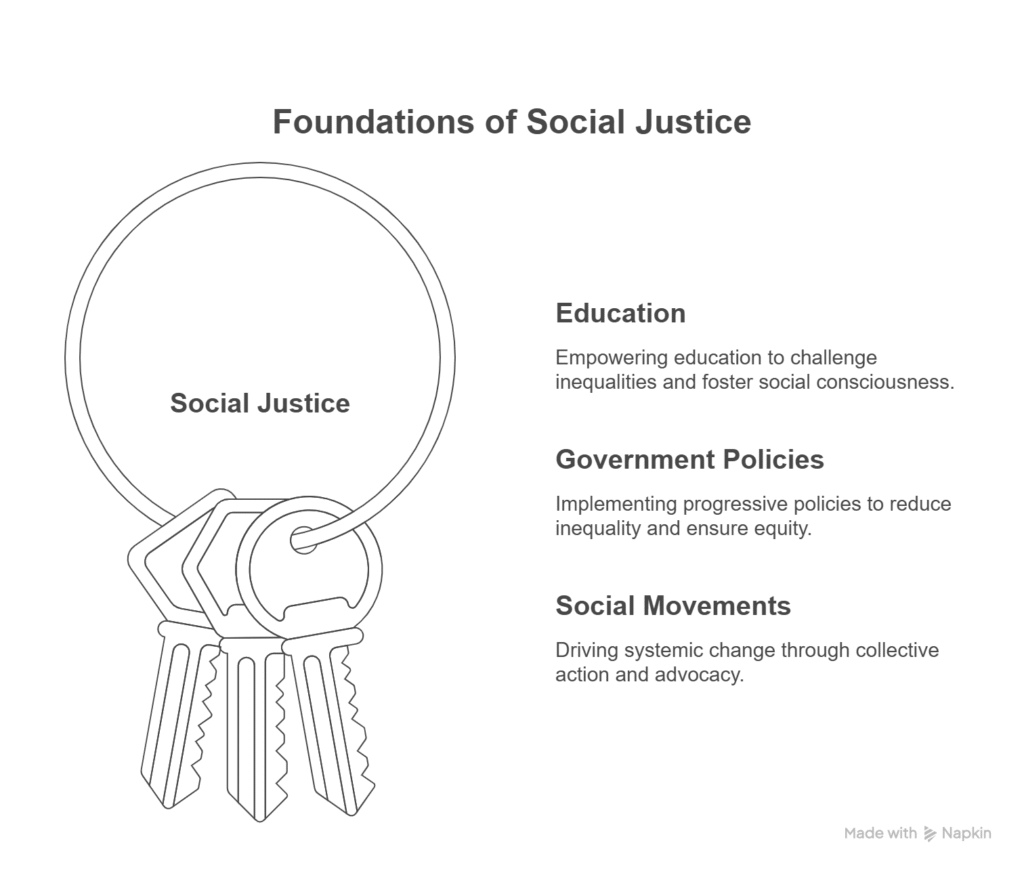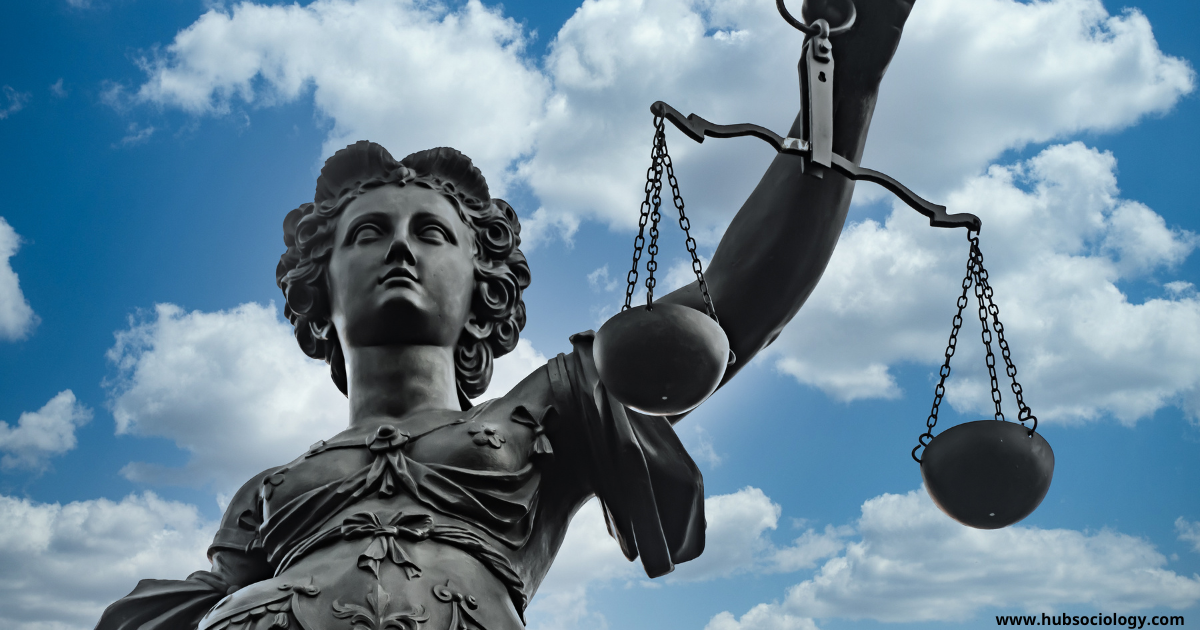Introduction
Social justice and equality are foundational concepts in sociology, shaping discussions on fairness, rights, and opportunities within societies. These ideas are central to understanding how societies distribute resources, power, and privileges among different groups. From a sociological perspective, social justice refers to the equitable distribution of wealth, opportunities, and privileges, while equality pertains to the idea that all individuals should have the same rights and access to societal benefits. However, achieving these ideals remains a complex challenge due to structural inequalities, discrimination, and historical injustices.

This article explores the sociological dimensions of social justice and equality, examining theoretical perspectives, key issues, and contemporary debates. It also discusses the role of institutions, policies, and social movements in advancing these principles.
Theoretical Foundations of Social Justice and Equality
Sociological theories provide different lenses through which social justice and equality can be understood. Three major perspectives—functionalism, conflict theory, and symbolic interactionism—offer distinct interpretations.
1. Functionalism
Functionalists view society as a system of interdependent parts working together to maintain stability. From this perspective, social inequality is seen as inevitable and even necessary for societal functioning. Talcott Parsons argued that stratification motivates individuals to work harder, ensuring that the most talented occupy key positions.
However, critics argue that functionalism justifies inequality rather than addressing its injustices. The theory often overlooks how systemic disadvantages prevent marginalized groups from achieving equality.
2. Conflict Theory
Rooted in Marxist thought, conflict theory emphasizes power struggles between dominant and subordinate groups. Karl Marx claimed that capitalism perpetuates class inequality, with the bourgeoisie (owners) exploiting the proletariat. Similarly, modern conflict theorists like C. Wright Mills highlight how elites maintain power through economic and political institutions.
Feminist and critical race theorists extend this analysis to gender and racial inequalities. Patricia Hill Collins, for instance, discusses intersectionality—the overlapping systems of oppression based on race, class, and gender. Conflict theory thus underscores the need for structural change to achieve social justice.
3. Symbolic Interactionism
This micro-level perspective examines how individuals construct meanings around justice and equality through social interactions. Labels like “criminal,” “unemployed,” or “illegal immigrant” shape societal perceptions and reinforce inequalities. Symbolic interactionists study how stereotypes and prejudices perpetuate discrimination, affecting access to education, jobs, and legal rights.
While this approach highlights everyday injustices, it is often critiqued for neglecting broader structural forces.
Key Dimensions of Social Justice and Equality
Social justice encompasses multiple dimensions, including economic, political, legal, and cultural equality. Sociologists analyze these areas to understand systemic barriers and potential solutions.
1. Economic Equality
Economic disparities remain a major obstacle to social justice. Wealth concentration among the top 1%, wage gaps between genders and races, and lack of access to basic necessities illustrate persistent inequalities. Sociologists study how policies like progressive taxation, minimum wage laws, and social welfare programs can mitigate these disparities.
Thomas Piketty’s Capital in the Twenty-First Century (2013) highlights how unchecked capitalism exacerbates wealth inequality. He advocates for global wealth taxes to redistribute resources more equitably.
2. Political Equality
Political justice involves equal participation in governance. However, voter suppression, gerrymandering, and underrepresentation of marginalized groups hinder democratic fairness. Sociologists examine how power structures exclude minorities and the poor from decision-making processes.
The works of Jürgen Habermas on deliberative democracy emphasize inclusive public discourse as a means to achieve political justice.
3. Legal Justice
The legal system often reflects societal biases, with racial and class disparities in policing, sentencing, and incarceration. Michelle Alexander’s The New Jim Crow (2010) demonstrates how mass incarceration perpetuates racial caste systems in the U.S.
Restorative justice—an alternative to punitive approaches—seeks to repair harm through reconciliation rather than punishment, promoting fairness in legal systems.
4. Cultural Equality
Cultural justice involves recognizing and valuing diverse identities. Colonialism, cultural appropriation, and linguistic discrimination marginalize minority cultures. Sociologists like Pierre Bourdieu discuss “cultural capital”—how dominant cultures privilege certain knowledge and behaviors, disadvantaging others.

Multicultural policies, such as bilingual education and anti-discrimination laws, aim to foster cultural equity.
Contemporary Issues in Social Justice and Equality
Modern societies face evolving challenges in achieving justice and equality. Key issues include:
1. Intersectionality
Kimberlé Crenshaw’s concept of intersectionality explains how race, gender, class, and other identities intersect to create unique forms of oppression. For example, Black women face compounded discrimination compared to White women or Black men. Policies must address these overlapping inequalities to ensure true equity.
2. Global Inequality
Globalization has intensified economic disparities between nations. While developed countries benefit from cheap labor and resources in the Global South, impoverished nations struggle with debt and exploitation. Sociologists like Immanuel Wallerstein’s world-systems theory analyze these global hierarchies.
International organizations (e.g., the UN) advocate for fair trade, debt relief, and climate justice to address these imbalances.
3. Digital Divide
Technology access is a new frontier of inequality. The digital divide—disparities in internet access—excludes low-income and rural populations from education and job opportunities. Bridging this gap is critical for equal participation in the digital era.
4. Environmental Justice
Marginalized communities disproportionately suffer from pollution and climate change. The Flint water crisis and indigenous land dispossession exemplify environmental racism. Sociologists study how sustainable policies can ensure fair distribution of environmental benefits and burdens.
The Role of Institutions and Social Movements
Achieving social justice necessitates institutional reform and collective action.
1. Education
Schools reproduce or challenge inequalities. Critical pedagogy, as proposed by Paulo Freire, encourages empowering education that fosters social consciousness. Affirmative action and scholarship programs aim to reduce educational disparities.
2. Government Policies
Progressive taxation, universal healthcare, and anti-discrimination laws are crucial for equity. The Nordic model, with its strong welfare state, demonstrates how policies can reduce inequality.
3. Social Movements
Movements like Black Lives Matter, #MeToo, and climate strikes push for systemic change. These efforts raise awareness, influence policies, and empower marginalized groups.

Conclusion
Social justice and equality are dynamic and contentious notions in sociology. While theoretical perspectives offer different explanations for inequality, structural barriers persist across economic, political, legal, and cultural spheres. Contemporary issues like intersectionality, global inequality, and digital divides complicate the pursuit of justice. However, institutional reforms and social movements continue to drive progress.
Ultimately, achieving social justice requires dismantling oppressive structures and fostering inclusive policies. As sociologists emphasize, equality is not merely about equal treatment but about equitable opportunities for all individuals, regardless of their background. The struggle for justice remains a collective responsibility, demanding continuous advocacy and systemic change.
Highly Recommended Books
- Justice: What’s the Right Thing to Do? – Amazon Link – https://amzn.to/42H2Osz
- Feminism is for Everybody – Amazon Link – https://amzn.to/3S74Fkp
- The New Jim Crow – Amazon Link – https://amzn.to/3Ys25ch
Topic Related Questions
5-Mark Questions (Short Answer)
- Define social justice from a sociological perspective.
- Differentiate between equality of opportunity and equality of outcome.
- What is the role of affirmative action in promoting social justice?
- Explain the concept of ‘intersectionality’ in relation to social justice.
- How does the functionalist perspective view social inequality?
- Briefly discuss the impact of globalization on social justice.
- What is environmental justice? Provide an example.
- How does symbolic interactionism explain discrimination?
- What are the key principles of restorative justice?
- How does the digital divide contribute to social inequality?
10-Mark Questions (Brief Essay/Explanation)
- Discuss the conflict theory perspective on social justice and equality.
- Examine the relationship between economic inequality and social justice.
- How do legal systems contribute to or hinder social justice? Provide examples.
- Analyze the role of education in promoting social equality.
- Explain how gender inequality affects social justice with relevant examples.
- Discuss the impact of caste and race-based discrimination on social justice.
- Evaluate the effectiveness of social movements (e.g., BLM, #MeToo) in achieving equality.
- How does cultural capital (Bourdieu) contribute to social inequality?
- What are the challenges in achieving global social justice?
- Discuss the concept of ‘equity vs. equality’ in the context of social justice policies.
15-Mark Questions (Long Essay/Critical Analysis)
- Critically analyze the role of the state in ensuring social justice and equality.
- “Capitalism perpetuates inequality.” Discuss this statement in the context of social justice.
- Examine the intersection of caste, class, and gender in shaping social inequalities in India.
- How do structural inequalities in healthcare and education affect social justice?
- Evaluate the impact of globalization on social justice in developing countries.
- Discuss the challenges and prospects of achieving social justice in a multicultural society.
- “Social justice cannot be achieved without economic justice.” Critically evaluate.
- Analyze the role of media and technology in promoting or hindering social justice.
- Compare and contrast Marxist and liberal views on social justice and equality.
- How can restorative justice be an effective alternative to punitive justice systems?
Like this this Post? You Can follow as on :-
Facebook – https://www.facebook.com/hubsociology
Whatsapp Channel – https://whatsapp.com/channel/0029Vb6D8vGKWEKpJpu5QP0O
Gmail – hubsociology@gmail.com

4 thoughts on “Social Justice and Concept of Equality”